Coronavirus: Daniel Andrews blows up, issues new warning in NZ travel bubble row
Victorian Premier Daniel Andrews has hit back at Health Minister Greg Hunt and issued a new warning over border closures, after the New Zealand travel bubble bursts in embarrassing fashion.
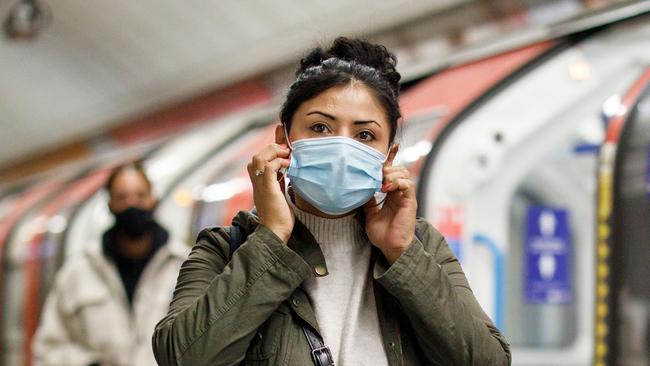
Coronavirus
Don't miss out on the headlines from Coronavirus. Followed categories will be added to My News.
- Families of US COVID victims’ strong message for Trump
- Can you get coronavirus twice? Here’s the answer
Victorian Premier Daniel Andrews has hit back at Health Minister Greg Hunt and issued a new warning over border closures, after the New Zealand travel bubble bursts in embarrassing fashion.
But the federal government has hit back at Mr Andrews over his claims Victoria was unaware people arriving from New Zealand under a travel bubble deal with NSW could then travel on to Melbourne.
Acting Immigration Minister Alan Tudge told reporters on Saturday the issue had been discussed at the Australian Health Protection Principal Committee and that it had been widely understood people arriving from New Zealand “would be treated like any other person in NSW”.
This means they could travel to states that had not closed their borders, such as Victoria.
No state, including Victoria, had raised any concerns about that arrangement at the committee meeting, he said.
Mr Andrews said he had made it clear Victoria was not part of the travel bubble.
As many as 17 New Zealanders were caught entering Melbourne late on Friday.
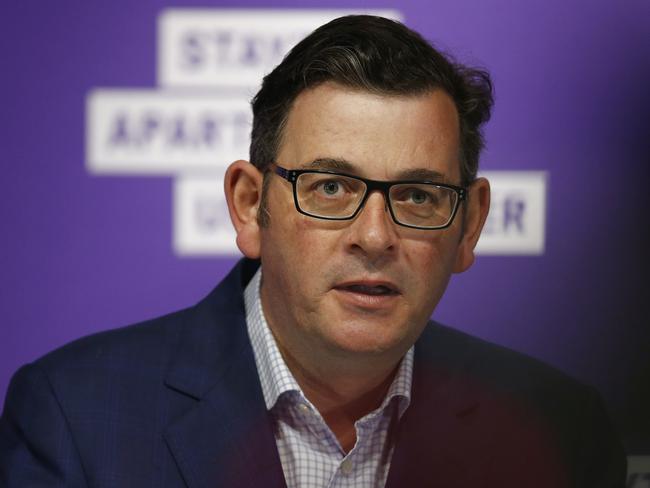
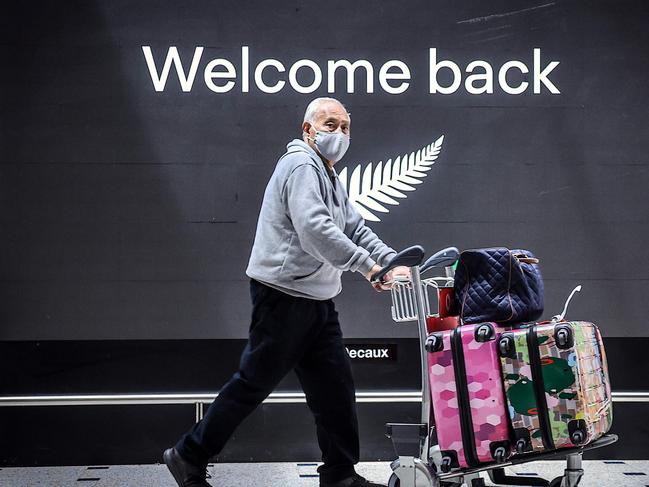
The revelation has clouded the introduction of the scheme, which was warmly welcomed by Prime Minister Scott Morrison earlier on Friday, when about 230 Kiwis arrived in Sydney.
“We have already welcomed our first Kiwis back to Australia for a holiday. That’s fantastic,” the Prime Minister said.
“Some 230, I understand, were on the flight this morning that has arrived, and I think is just going through customs now as we speak, and there are others who will be coming.”
Those 17 travellers then jumped on a flight to Melbourne when they were detained.
The travellers, who wanted to visit family in Melbourne, were able to slip through domestic flight checks to board their connecting flight.
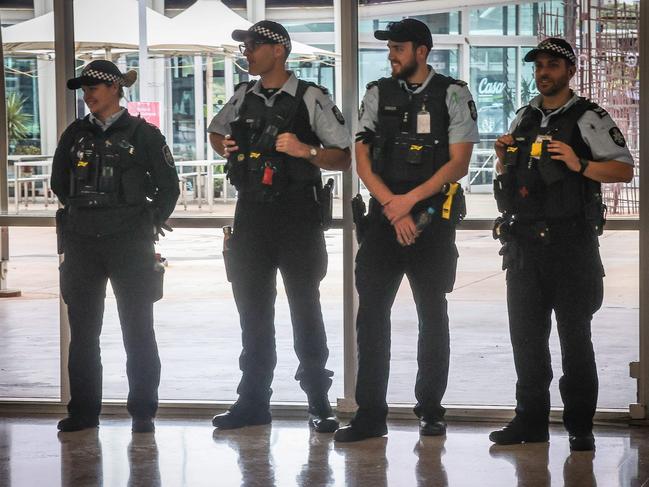
The Victorian Premier has also fired back at Federal Health Minister Greg Hunt for suggesting Victoria had met epidemiological conditions to reopen hospitality, movement and family reunions.
Minister Hunt tweeted: “The epidemiological conditions for a COVID Safe reopening of hospitality, movement & family reunions among others, have now been firmly met. Vic should now be able to move to the next step in line with NSW”.
But Mr Andrews said his government would “not be pressured”.
“If Minister Hunt is genuinely suggesting that we are keeping this lockdown on because somehow we think Victorians are enjoying it or it is a choice that we are making — it’s just wrong,” he said.
“I will boldly predict that whatever I stand up here tomorrow and announce, there will be members of that federal government saying ‘It is not enough, you should have done more’. I will say it again, politics, this sort of stuff doesn’t work, it doesn’t work against this virus. We aren’t going to risk everything that Victorians have sacrificed. This is not a game. The stakes are too high.”
Mr Andrews said he “made it clear” in a letter to Prime Minister Scott Morrison: “I don’t want to close the Victorian border. But if I have to do it, I will. Because I’m just not having people turn up here from another country, and the first we find out about it is when they’re already here.”
He will not be making “significant announcements” about the way Victoria will move out of lockdown and ease restrictions on Sunday.
NSW CASES EXCEED VICTORIA
The number of newly recorded COVID-19 cases in NSW has exceeded that of Victoria.
According to the latest official figures, NSW had seven new cases of coronavirus in the 24 hours to Friday 9pm (AEDT).
Victoria recorded just one new case and zero deaths over the last day.
The dip marks Victoria’s lowest daily tally since June 8 and sees Melbourne’s 14-day rolling average drop to 8.1 while regional Victoria’s is now 0.7.
The state now has 148 active cases of coronavirus with the newest infection linked to a known outbreak. This accounts for over half of the active cases, which is estimate to be 225.
Of NSW’s cases, two are returned overseas travellers in quarantine. the other five are locally transmitted.
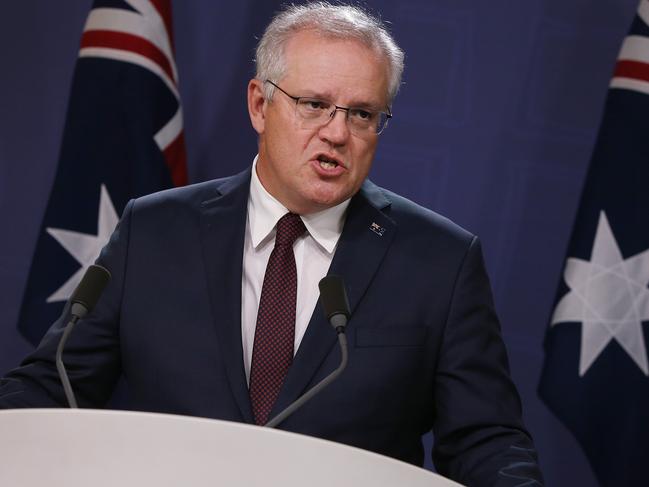
EUROPE ‘ON THE BRINK OF DISASTER’
Europe’s surging coronavirus second wave has the continent “on the brink of disaster” as governments make difficult choices and more than a dozen countries reported their highest ever number of new infections.
But in some good news, numbers declined in Latin America, the Middle East and Asia.
In France, which reported more than 30,000 new infections on Thursday, 18 million people in nine major cities risk a fine from Saturday (local time) if they are not at home by 9pm, as President Emmanuel Macron said a curfew was needed to halt “the parties, the moments of conviviality, the festive evenings … They accelerate the disease. We have to act.”.
In the Czech Republic, schools have closed and medical students are being enlisted to help doctors. All Dutch bars and restaurants are shut.
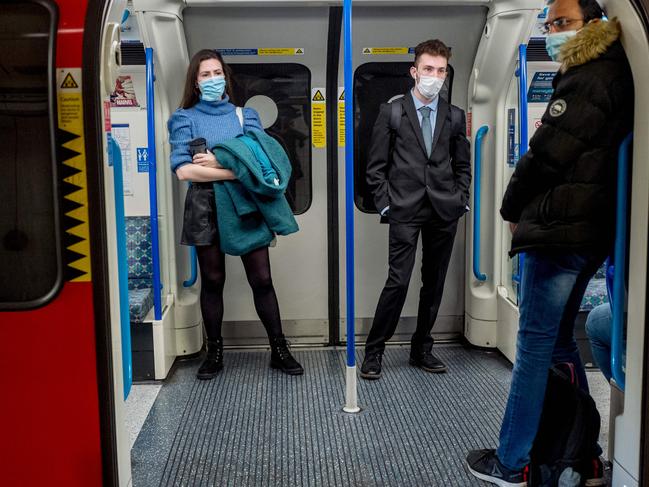
Austria, Belgium, the Czech Republic, France, Germany, Italy, the Netherlands and Poland are among countries to have broken daily case records, prompting the World Health Organisation to call for an “uncompromising” effort to stem the spread.
In Poland, which controlled numbers in recent months, registered a record of nearly 9,000 new cases. It is expanding training for nurses and planning new field hospitals, prompting immunologist Pawel Grzesiowski to say: “We are on the brink of disaster”.
Millions in England including London were just hours away from stricter restrictions, including a ban on household mixing, while bars and restaurants closed in Spain’s northeastern region of Catalonia.
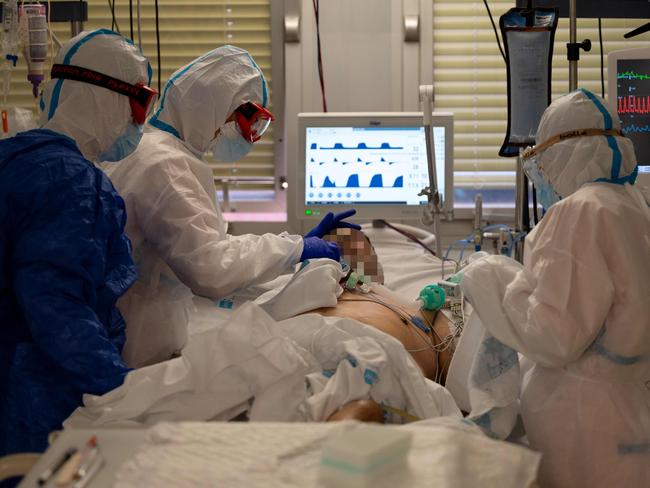
In Greece, the densely populated northern area of Kozani went into a new lockdown.
In the medical world, hopes for one of the most promising COVID-19 treatments, the antiviral drug remdesivir, were dashed when a study backed by the World Health Organisation found it does little to prevent deaths from the disease.
The epidemic also further disrupted the corridors of power, with Finnish Prime Minister Sanna Marin the latest politician forced to self-isolate after coming into contact with someone who tested positive for COVID-19.
But among the gloomy news in an epidemic that has killed close to 1.1 million worldwide and infected nearly 39 million, some rays of light emerged for nature- and sport-lovers.
Rare pink dolphins were found to be returning to the waters between Hong Kong and Macau after the pandemic halted ferries, while Wimbledon organisers said the Grand Slam tournament would go ahead next year, even if behind closed doors.
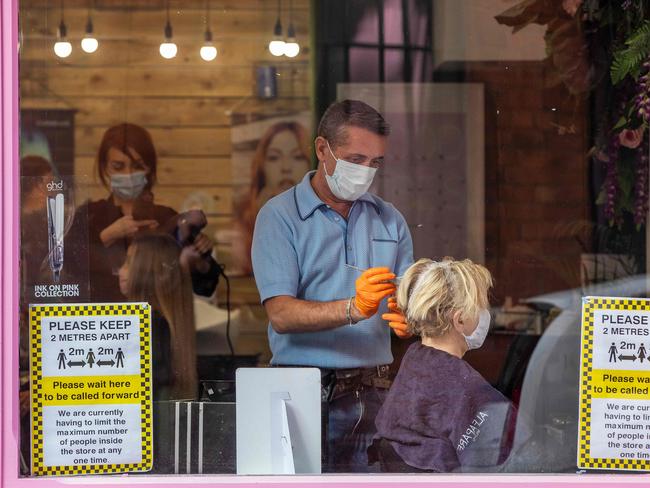
PFIZER WANTS AUTHORISATION FOR VACCINE
Meanwhile, US pharmaceutical giant Pfizer expects to file for emergency use authorisation for its COVID-19 vaccine in late November, around two weeks after the November 3 US presidential election, it said on Friday (local time).
The company said it hopes to move ahead with the vaccine after safety data is available in the third week of November, immediately lifting the company’s shares two per cent in the US.
“So let me be clear, assuming positive data, Pfizer will apply for Emergency Authorisation Use in the US soon after the safety milestone is achieved in the third week of November,” the company’s chairman and CEO Albert Bourla said in an open letter.
The announcement means the United States could have two vaccines ready by the end of the year, with Massachusetts biotech firm Moderna aiming for November 25 to seek authorisation.
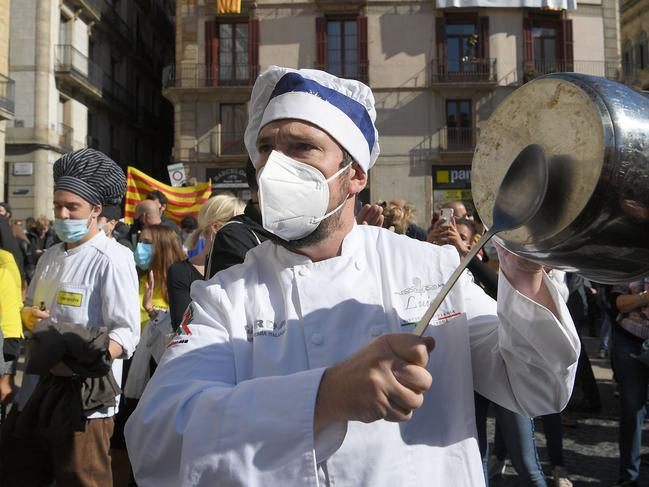
The Food and Drug Administration (FDA), which authorises pharmaceuticals for distribution in the US — asked vaccine developers last week to spend two months monitoring for serious side effects after the second dose is given to trial participants.
The FDA will require the vaccine to prove effective and safe, while Pfizer will have to demonstrate it is capable of producing large scale production.
Pfizer and Modern, both funded by the US government, launched Phase 3 of their clinical trials at the end of July, and both have started production of doses.
They aim to be in a position to deliver tens of millions of doses to the US by the end of the year.
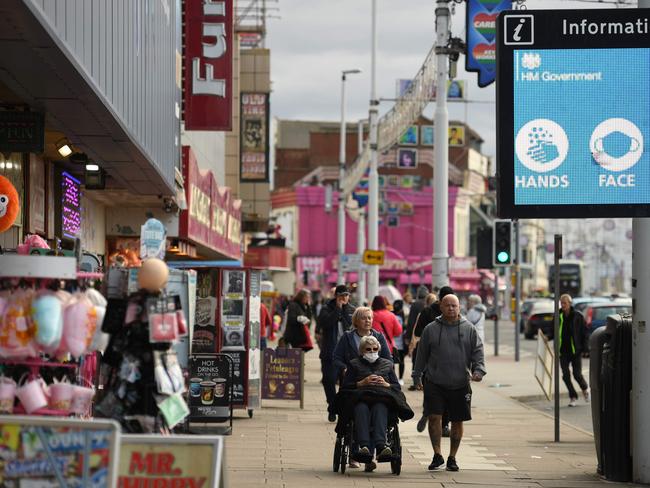
Bourla said the Pfizer trial, involving 30,000 participants, might produce results on the vaccine’s efficacy within the next two weeks.
“I’ve said before, we are operating at the speed of science. This means we may know whether or not our vaccine is effective by the end of October,” Bourla said.
Pfizer, which is partnering with German company BioNTech on the research, gained more than two per cent in online trading ahead of the opening of US markets.
PM’S NEW DEAL TO BRING AUSSIES BACK
Meanwhile, Scott Morrison has confirmed Qantas will have a priority list of vulnerable passengers to help bring more stranded Australians home.
The Howard Springs quarantine facility near Darwin will be opened up until the end of March next year and used for the purpose of housing repatriates on rotation for two week periods.
Mr Morrison confirmed the quarantine plan will allow about 5000 more Australians to return.
Under a new agreement struck between the federal government and the NT government, he said Howard Springs will be called the Northern Territory Centre for national resilience.
He said the government will support flights from the UK, South Africa and India.
The facility, 25km south of Darwin, was a disused workers’ village with capacity for 3500 residents and was previously used in February for repatriation flights from Wuhan.
Costs will be paid by passengers and will be $2,500 for an individual and $5,000 for a family.
“ … as much as getting Australians home is our top priority when it comes to utilising these quarantine arrangements, our other priority is to get Australia back to a safe level of engaging with the rest of the world and in priority areas,” he said.
Mr Morrison said it was “important that we look ahead”.
“Yes, we need to deal with the here and now when it comes to COVID-safe travel and behave and quarantine, and returning Australians,” he said.
“But with or without a vaccine, we need to be in a different place next year to where we are this year. And we need to be planning for that now.”
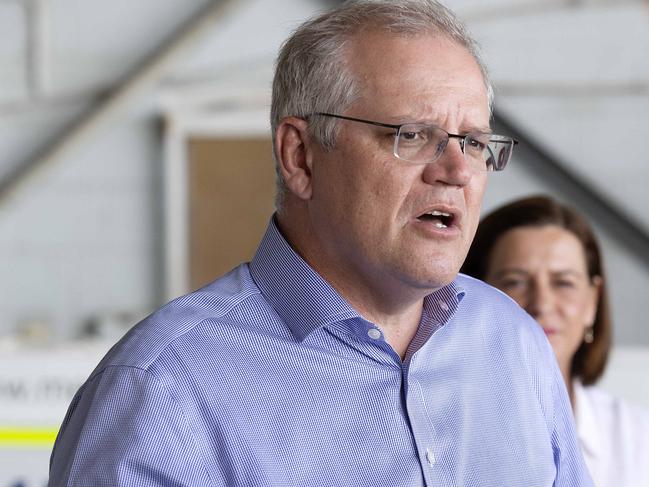
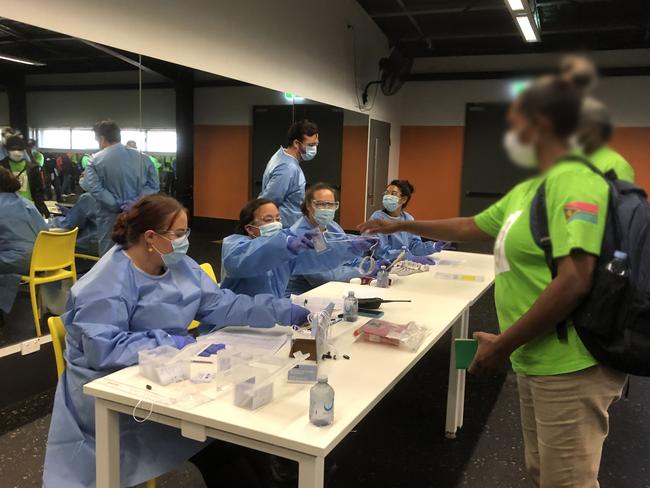
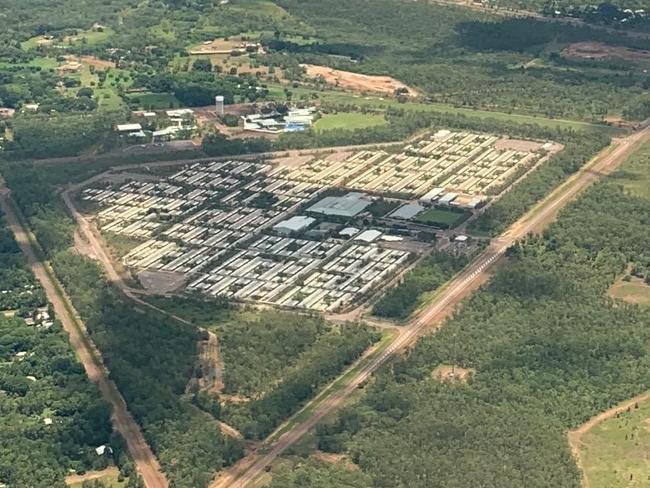
It comes as a national cabinet meeting was postponed after the Prime Minister became stranded in Queensland when his RAAF plane was grounded with “technical problems”.
The international arrivals cap was lifted in September from 4000 to 6000 a week to allow more Australians back into the country.
More than 26,000 Australians stuck overseas had registered their intent to come home with the Department of Foreign Affairs.
Opposition leader Anthony Albanese accused Mr Morrison of prioritising the return of overseas visitors before the Australians wanting to return. “That should be the first priority,” Mr Albanese said.
“They are stuck overseas.”
He said some Australians had paid tens of thousands of dollars to book flights that had been cancelled, while others had newborn babies.
“It is an absolute disgrace that this government has done nothing about it and pretends someone else is responsible for our national borders and for our customs and for our quarantine,” Mr Albanese said.
COVID-19 TRIAL SHOWS TREAMENTS DON’T STOP DEATH
A major trial into the four leading COVID-19 treatments has found none of them helped prevent death, the need for using a ventilator or reduced the amount of time patients with the virus spent in hospital.
The World Health Organisation’s SOLIDARITY involved 11,266 adults hospitalised due to COVID-19 in 405 hospitals around the world as is one of the largest and most well designed trials to date.
It tested the medications Remdesivir one of the antiviral medications given to US president Donald Trump when he caught coronavirus.
Hydroxychloroquine a medicine Donald Trump spruiked as preventing the virus which he also took himself.
Antiviral Lopinavir used to treat HIVAIDS patients and Interferon a man-made version of proteins your body makes to help your immune system find and attack viruses.
“Remdesivir, Hydroxychloroquine, Lopinavir and Interferon regimens appeared to have little or no effect on hospitalised COVID-19, as indicated by overall mortality, initiation of ventilation and duration of hospital stay.” The study published on the preprint website medrivix.org said.
The study is yet to be peer reviewed or published in a major medical journal.
Professor David Henry is in the Institute for Evidence-Based Healthcare at Bond University said the study “underscores just how difficult it has been to find antiviral drugs that are effective against SARS-CoV-“2
“In the case of remdesivir, the results are particularly disappointing. Previous trials (including Recovery and ACTT-1) have shown shortened recovery,” he said.
Professor Ian Seppelt Nepean Hospital Senior Specialist in Intensive Care said to date the only agents with any robust data showing benefit are the corticosteroids (dexamethasone or methylprednisolone).
He said it was now time to stop spending resources studying the four drugs in the SOLIDARITY trial.
VICTORIA’S CASES REACH LOWER LEVELS
Victoria has recorded only two new coronavirus cases and no death as the city’s all-important 14-day average fell for the second straight day.
It’s the state’s lowest daily increase in 129 days since zero new cases were reported on June 9.
But it appears both were mystery cases, with infections from an unknown source in Melbourne rising by two to 17 since Thursday. The city’s 14-day average has fallen slightly from 8.9 to 8.7.
It comes after six new cases and no deaths were recorded on Thursday.
Health authorities say the 14-day average must be about five for the state government to consider easing restrictions on October 19.
But Premier Daniel Andrews said only the restrictions that were safe to ease would be eased over the weekend.
Mr Andrews said if Melbourne opened up now, the city would only be open for a short period of time before rising cases would shut the city down again.
Meantime, NSW has recorded five new cases of coronavirus overnight.
AUSTRALIA OPENS TRAVEL BUBBLE WITH NZ
The travel bubble between New Zealand and Australia has officially opened, with Kiwis now flying into Sydney and the Northern Territory to visit family and friends or embark on a much needed holiday without having to quarantine.
The federal government says the initiative is the first step in a long-phase approach to returning to international travel.
For now, the travel bubble is only one way, with New Zealand Prime Minister Jacinda Ardern saying it is still too early for Australians to travel across the ditch.

MORE NEWS
Trump to give first speech after COVID treatment
Hoges: ‘I’m stuck and I’m homesick’
Homecoming Harry faces ‘telling off from Queen
Originally published as Coronavirus: Daniel Andrews blows up, issues new warning in NZ travel bubble row
